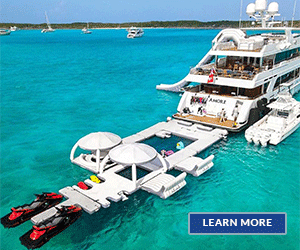The U.S. Coast Guard has divided its Miami anchorage ground into two separate areas to reduce potential damage to threatened coral posed by anchoring vessels.…
What to expect when boarded by the U.S. Coast Guard
Jan 15, 2013 by Dorie CoxAlthough most yachts adhere to international, commercial or higher regulations they still must abide by local laws and may be inspected by the U.S. Coast Guard while in U.S. waters.
Auxiliary vessels and dinghies must also be compliant.
According to the USCG Web site (www.uscg.mil), “boardings are not necessarily based on suspicion that a violation already exists aboard the vessel. Their purpose is to prevent violations.”
While specific requirements vary by vessel size, these are categories found on the boarding report form used by enforcement officers on the water.
– Vessel numbers or documentation papers must be on board and the boat’s name and hailing port must be displayed on the exterior hull.
– Personal flotation devices (pfds) must be “readily accessible” in a suitable size for each person, including children. One type IV (throwable) device must be “immediately available.” Pfds may not be stored in unopened plastic packaging. And pfds must be worn by personal watercraft riders.
– Visual distress signals include a minimum of either three day and three night pyrotechnic devices; one day non-pyrotechnic device (flag) and one night non-pyrotechnic device (auto
SOS light); or a combination of both.
– Fire extinguishers must be onboard boats with inboard engine, double bottom hulls not completely sealed or not completely filled with flotation materials, closed living space, closed stowage compartments that contain flammable materials or permanently installed fuel tanks.
– Ventilation for boats with gasoline engines in closed compartments, built after Aug. 1, 1980, must have a powered ventilation system. Boats with closed fuel tank compartments built after Aug. 1, 1978, must meet requirements by displaying a “certificate of compliance.”
– Backfire flame control is required on all gasoline powered inboard/outboard or inboard motor boats.
– Sound-producing devices/bells are required on all boats and must be capable of a four-second blast audible for one-half mile.
– Navigation lights are required on all boats between sunset and sunrise and in conditions of reduced visibility. Boats 16 feet or larger must have navigation lights and an all-around anchor light capable of being lit independently from running lights.
– Pollution placards are required. Boats more than 26 feet in length, operating in U.S. navigable waters, must display a MARPOL trash placard. Ocean-going boats 40 feet and over must also have a written trash disposal plan.
– Marine sanitation devices or installed toilet must be Coast Guard approved devices and overboard discharge outlets must be capable of being sealed.
– Boats 39.4 feet and larger must have a current copy of the state and/or local requirements and all vessels must meet the requirements of the state in which it is being examined.
– Officers may assess overall vessel condition and look for clean bilge, electrical systems protected by fuses or manual reset circuit breakers, batteries secured and terminals covered to prevent arcing, and that portable fuel tanks are secured.
Dorie Cox is associate editor of The Triton. Comments on this story are welcome at [email protected].
Topics:


